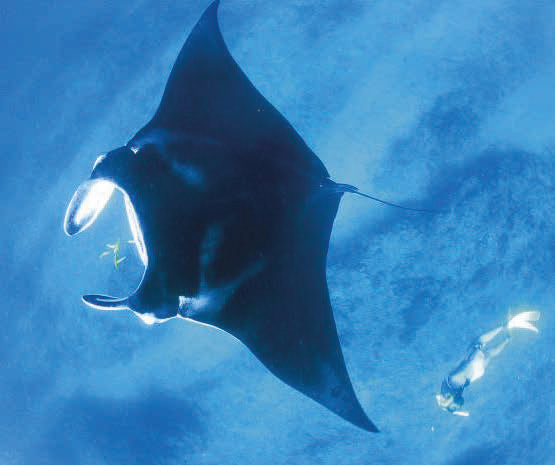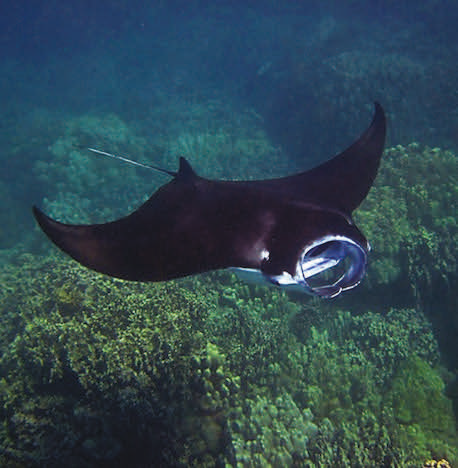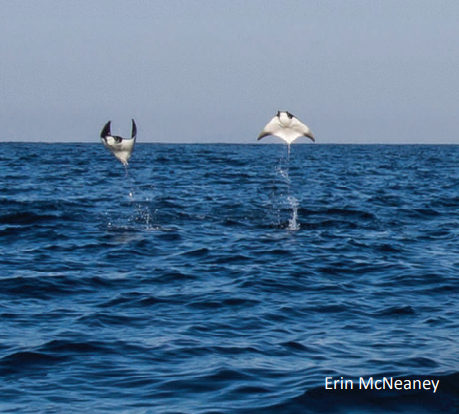Manta Ray
Manta ray
Manta birostris
Description

| Width 6-9m |
Lifespan 40 years |
Weight 2 tonnes |
The top of the manta ray’s flat body is grey to black; underneath it is white. Its tail is short and has no venomous spike. They have no teeth in the upper jaw and only tiny, skin-covered stumps in the lower jaw. Manta rays may be seen flying out of the water, flipping and somersaulting several times before landing with a loud slap. The word ‘manta’ is Spanish for ‘blanket’.
Diet and habitat

The manta ray is a filter-feeder, using a pair of fleshy flaps on each side of its head to direct zooplankton (tiny animals) into its mouth. These flaps, are rolled into spirals when not feeding. Although the flattened body of rays is an adaptation for life on the sea floor, they prefer open water close to the surface.
Breeding

| Gestation 12 months |
No. young 1-2 |
Maturity varies |
Like sharks, manta rays fertilize eggs internally. They are ovoviviparous— the eggs hatch within the uterus and females give birth to live young (pups). At birth pups can be 1.2m wide and weigh 45kg. They remain in shallow water for a few years before heading further offshore. Females give birth once every two to five years.
Distribution

Preferring tropical and subtropical waters, manta rays are found to 35º north and south of the Equator. They usually travel alone, but may be seen in groups where there is a zooplankton swarm. Manta rays may be seen from the lookout at Skipjack Point in Francois Peron National Park. They are also common around Dirk Hartog Island.
Status
Key threats to manta rays are from bycatch and targeted fisheries. Manta meat is worth little but their gill plates, or prebranchial appendages, have become highly sought after in Asian markets where they are sold as a medicinal tonic. However, recent studies show that manta ray tourism is increasing their economic worth and helping to protect them.
Fact sheet
SHARK BAY
World Heritage



